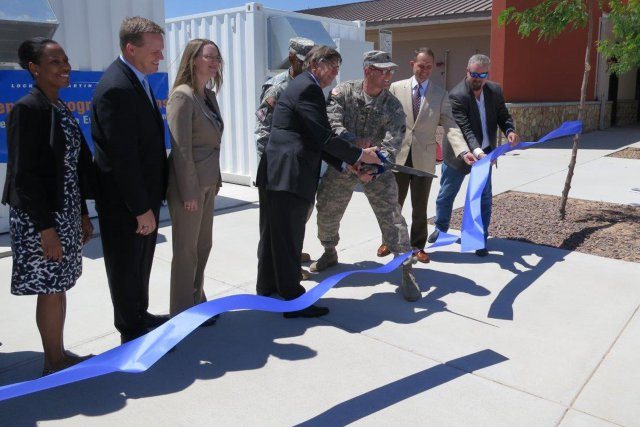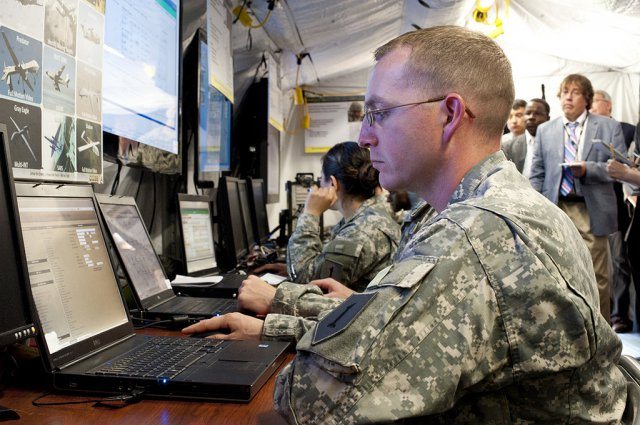Fort Bliss, Texas, has unveiled the Army’s first microgrid that will save resources, provide energy security, and be a model for other microgrids throughout the base.
The system integrates renewable energy, local power, energy storage and load management to guarantee uninterrupted continuous power in adverse conditions, said Maj. Gen. Dana J.H. Pittard, commanding general of Fort Bliss and the 1st Armored Division.
“This microgrid is really a look into the future of military energy,” he said. “The tactical utility of this technology is in the potential for our energy independence.”
Pittard said the grid-tied microgrid, which was installed by defense contractor Lockheed Martin, ensures that critical mission operations will stay powered at all times.
He said the $2.4 million project is a “scalable system” and the goal is to expand beyond the dining facility complex the microgrid is powering and apply the model to the rest of the base.
Pittard spoke May 16, 2013, at the ribbon cutting for the microgrid. He described the event as a “momentous occasion.”
He said he expects at least 20 percent in energy savings once microgrids are expanded throughout the installation.
Electricity costs at the base last year were about $16 million, said Fort Bliss spokesman Maj. Joe Buccino.
Buccino said the microgrid supports Fort Bliss’ Environmental Campaign Plan and is a major step forward in the goal of having Fort Bliss become Net Zero in energy, water and waste by 2018.
It also provides a guarantee that critical operations will be powered, no matter what the circumstance.
“We are entering an age of emerging threats and cyber warfare,” said Buccino. “We are assuming an unacceptable measure of risk at fixed installations of extended power loss in the event of an attack on the fragile electric grid.”
The microgrid includes an onsite backup generation, a 120 kilowatt solar array, a 300 kilowatt energy storage system and utility grid interconnection.
The microgrid program now enters its demonstration phase, which is slated to continue through July.
Last month, Pittard announced the Army Corps of Engineers had given the go-ahead for El Paso Electric to start work on a 20-megawatt solar farm, to be completed in 2015, that will power all of the division headquarters and most of the eastern sector of the installation.
Fort Bliss already hosts a 1.4-megawatt solar array, the Army’s second-largest, and has installed a 13.4-megawatt rooftop solar array on post housing. In addition, another 20-megawatt contract with El Paso Electric is in the works, as well as a plan with the city of El Paso to convert waste to energy, Pittard told reporters in April.











